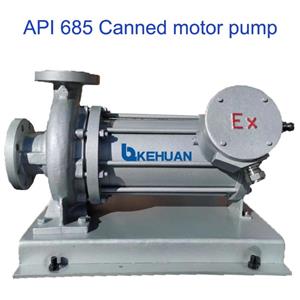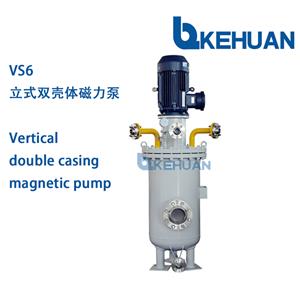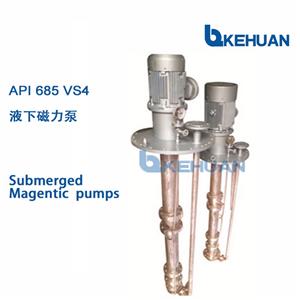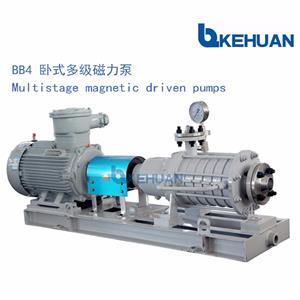Improving Pump Performance With Ceramic Containment Shells
One of the key variables affecting the performance and service life of a pump is the sealing of the shaft. Sealing rings or cartridges are common solutions, but magnetic couplings may provide higher efficiency. Advanced ceramic, in particular zirconium oxide FZM, is proving to be a useful material in the pump industry for improved energy efficiency, corrosion resistance and performance.
In magnetic driven pumps, there is no mechanical connection between the pump rotor and motor. Instead, the drive is transmitted through rotating magnets. Containment shells are used between the external magnets connected to the motor and the internal magnets connected to the pump rotor. This solution can provide leakage-free sealing, which improves pump safety when pumping aggressive media.
An additional safety consideration is the material for the containment shell. When operating, commonly used metals generate heat, triggered by magnetic induction. This additional heat is not permitted when pumping thermally sensitive substances and leads to rapid overheating of the pump in case of a coolant failure. Additional heat can also contribute to the evaporation of the pumped medium and cavitation.
Real-World Applications
In one case study, several pumps were sent to the factory for revision after two years of operation. The pumped medium was 110 C (230 F) hot oil with a bleaching earth content of approximately 5 percent. All flow-carrying components, internal circulation channels and narrow gaps had been flushed or ground out. However, no traces of wear could be detected on the ceramic shell. Therefore, it could be reinstalled in the repaired pump.
In another example with a different pump manufacturer, faulty outer bearings allowed the outer magnet to rub against the containment shell. Except for a grinding track with a depth of approximately 0.4 millimeters (mm), the ceramic containment shell remained undamaged. Thus, the entire pump could be saved, and only the bearings had to be replaced. In this application, the shell was under a pressure of almost 40 bar. Again, the ceramic material provided safety and performance with its nonmagnetic property, high fracture toughness and high mechanical strength.
Energy Efficiency With Ceramics
In addition, the gap between the two magnets is an important to maintaining performance. In order to keep this gap as small as possible, the wall thickness of the can is minimized to approximately 2 to 4 mm in the cylindrical area. FZM zirconium oxide can resist a certain elastic deformation due to its low modulus of elasticity, so that all stresses can be absorbed even at pressures up to 60 bar.
Applications such as conveying of oils or sulphuric acid do not take place at room temperature. Often temperature requirements are set where only a few materials can be used. FZM can be used at temperatures up to 450 C (842 F) without significant changes. Since all materials expand at these temperatures, tensions can arise. One advantage of this ceramic material is its coefficient of thermal expansion, which is similar to that of cast iron, enabling reliable bonding to metal. The ceramic shell expands together with the metal, and larger differences in tension are avoided.
The chemical industry deals not only with liquid, but also with solid and gaseous substances, which both can be explosive and inflammable. In order to master this field of application, the discharge of electrical charges must be guaranteed. Together with the Physikalisch-Technische Bundesanstalt (PTB) in Braunschweig, Germany, extensive measurements were carried out to determine the electrical discharge capacity according to IEC 60093 and IEC 60167. With the help of an additional external coating, the surface resistance and the earth leakage resistance (RA < 106 Ω) were significantly below the limit values. This means that a modified ceramic containment shell can be used in contact with all flammable media and in any explosive atmosphere.
Since 1987, ceramic shells have been installed in pumps made by one of the previously mentioned manufacturers. The ceramic shells were originally designed with a wall thickness of 3.5 mm, substantially improving magnetic distance as compared to the standard design and enabling 30 percent lower transmission power. With the help of a numerical stress analysis on different construction variants under given load and boundary conditions, the ideal dimensions were determined. Although the wall thickness of the cylindrical part of the containment shell withstands the maximum pressure load, it is not decisive. Much more important are the designs of transitions to the convex and flange ends. This made it possible to reduce the wall thickness to 1.9 mm while maintaining the same pressure resistance and ensuring complete interchangeability.




